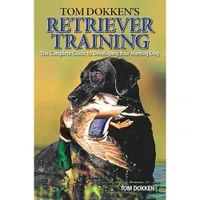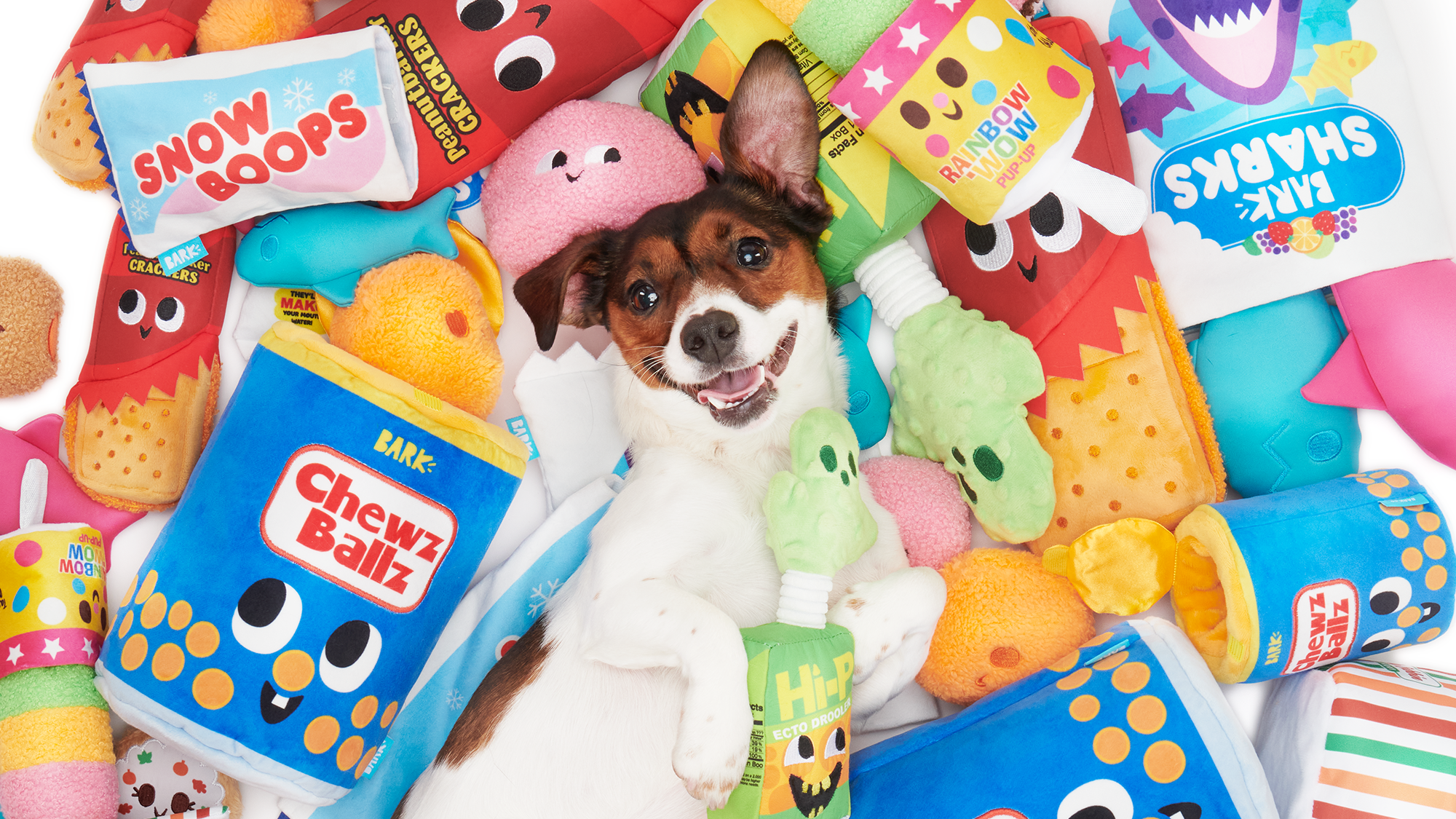How many types of retrievers are there? Get to know them all
Meet the six retriever breeds – and find out what each one excels at
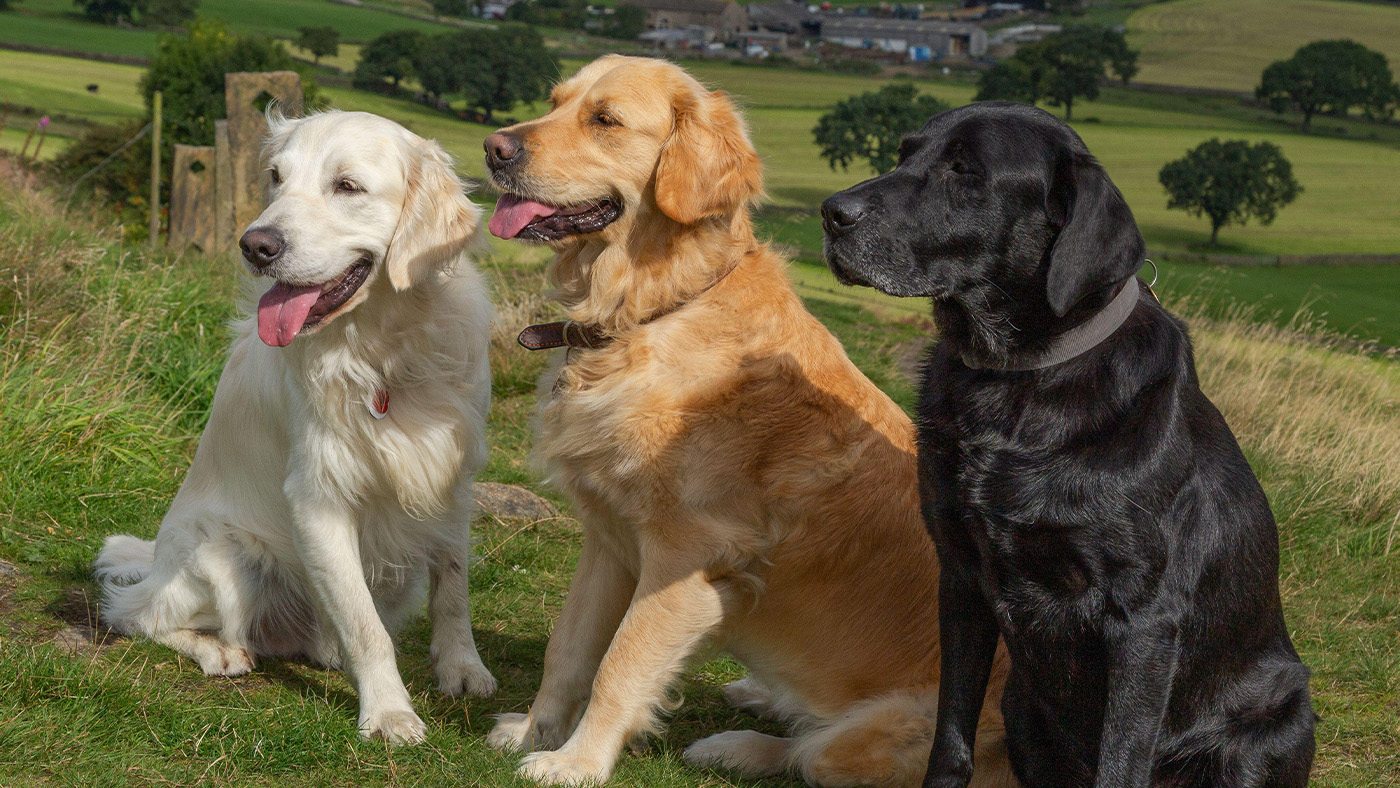
Incredibly intelligent, oodles of energy and super loyal, retrievers make great working dogs as well as beloved family pets. This feature will take a look at what makes a retriever a retriever, before going through the six types of retrievers in more detail…
What is a retriever?
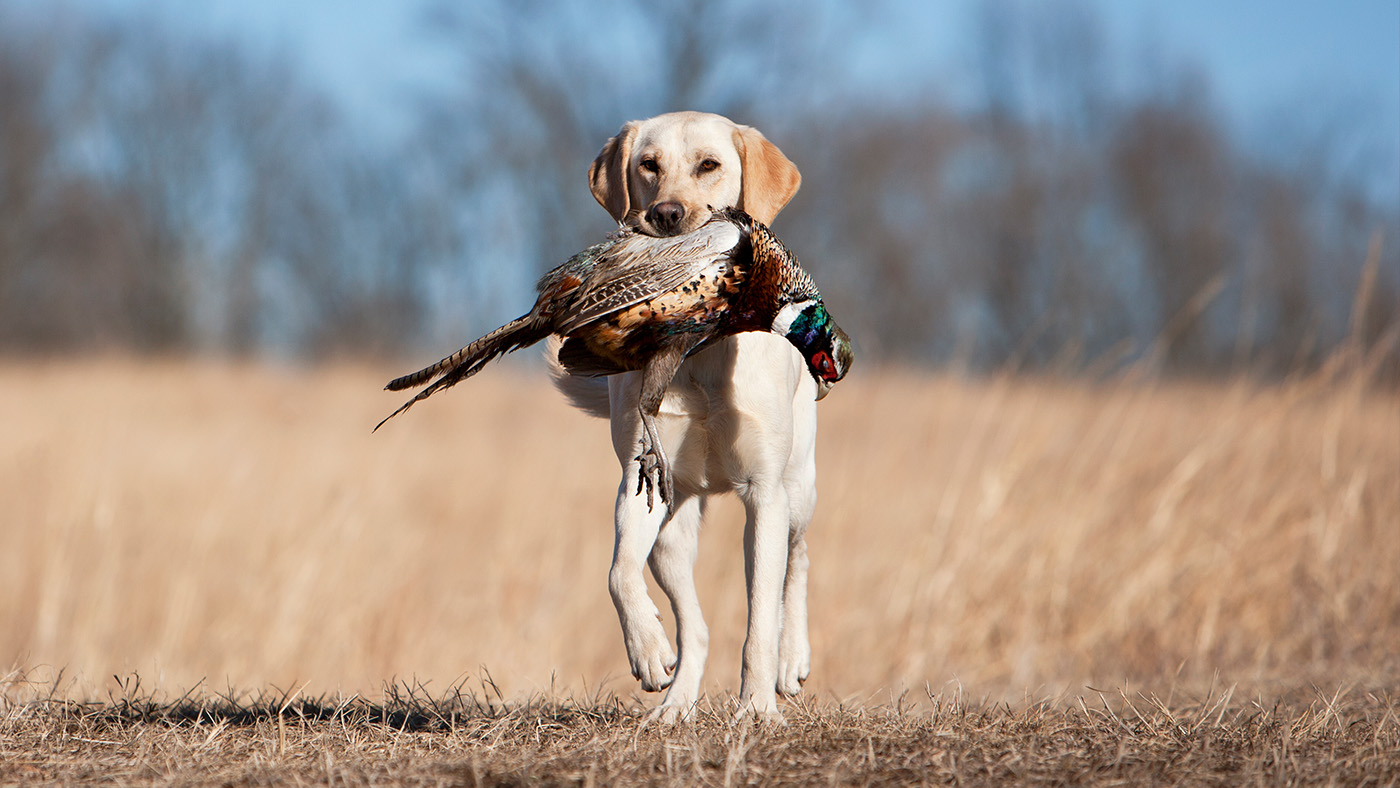
The name is a bit of a give away here, retrievers have been bred to assist with hunting. When a hunt shoots a bird, a retriever will track the bird down, pick them up and take them back to their owner.
To make their job easier, they have soft mouths, so they don't damage the bird with a strong jaw or bite, which would make it inedible. They also have webbed paws, which make them great water dogs and proficient swimmers. Their bodies are strong and agile, allowing them to work over difficult terrain.
Retrievers are also exceptionally intelligent and eager to please, a combination which makes them excellent working dogs. As a result, many retrievers make the best service dogs and continue to work as assistance, therapy and search and rescue dogs.
Add to that their loyalty and loving nature, and it's little surprise that retriever breeds are some of the most popular pets. The Labrador Retriever and golden retriever make it into the top 10 most popular dog breeds in the US, claiming second and third place respectively.
The American Kennel Club includes six retriever breeds in the sporting group, so we'll take a look at each breed individually and explain what makes them unique.
Types of retrievers
1. Chesapeake Bay Retriever
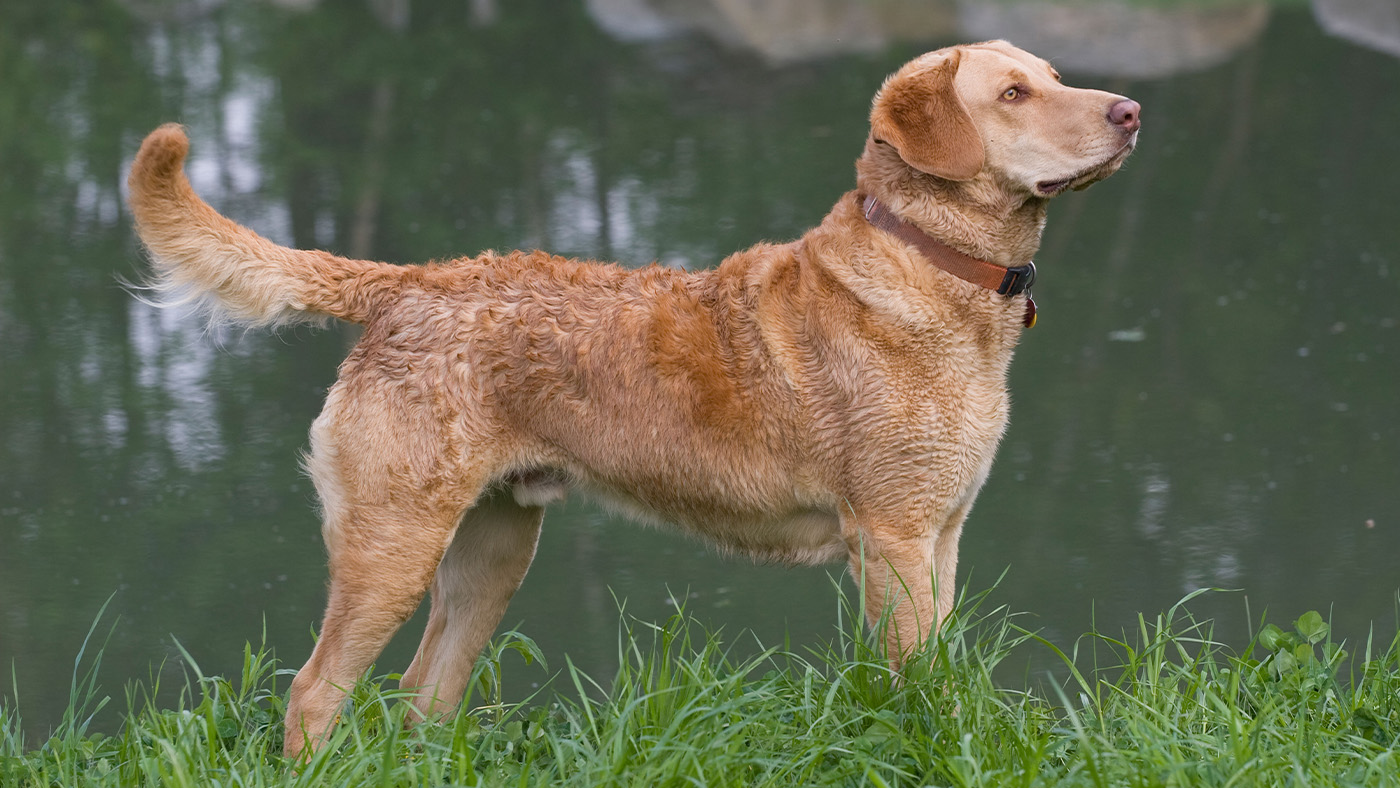
One of the biggest and sturdiest of the retriever breeds, the Chesapeake Bay Retriever can weigh up to 80 pounds fully grown. The only American-bred retriever, the Chesapeake Bay Retriever originated after two dogs were saved off an English shipwreck off the coast of Maryland in 1807, which then interbred with other dogs in the area.
Get the best advice, tips and top tech for your beloved Pets
Also known as Chessies, this breed is characterised by its waterproof coat, which is handy because these dogs love to swim. Like, really, love to swim! Their coat is wavy and slightly oily to the touch, which is ideal for a day spent in and out of water. They are solid coloured dogs, usually hitting the spectrum somewhere between straw and chocolate brown.
They've been bred to retrieve ducks and there are reports of Chessies being able to retrieve as many as 300 ducks in one day!
Like all retrievers they are incredibly intelligent and capable of great things, however they are the most likely of the retriever breeds to have a mind of their own, too. You’ll need to be on top of it with training if you bring home a Chesapeake Bay Retriever.
2. Curly-coated retriever
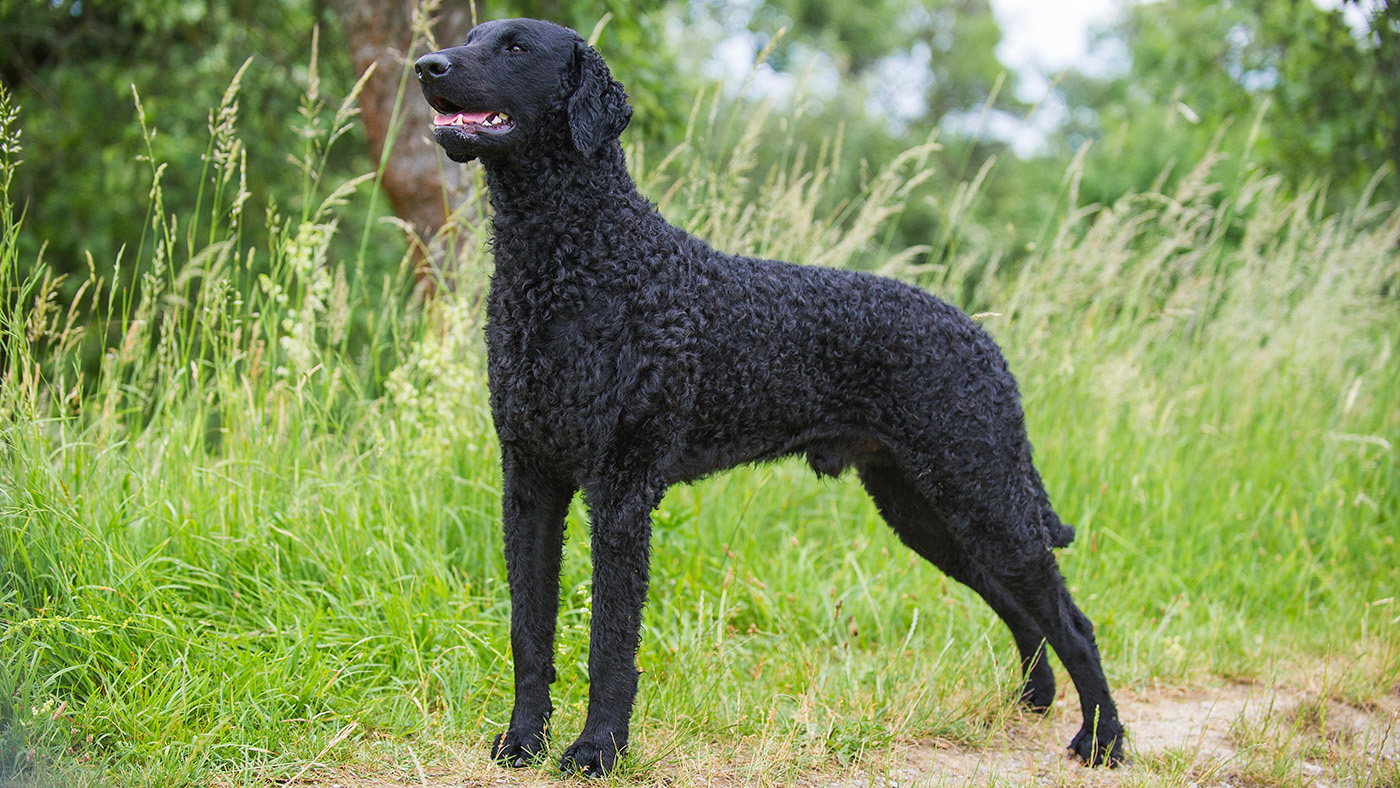
With their tight, water-resistant curls the curly-coated retriever is immediately recognisable. The breed is one of the oldest of the retriever breeds and is believed to have originated from the 16th century English Water Spaniel, the St. John’s Newfoundland, the retrieving setter, and, later on in the late 19th century, the poodle.
As well as their trademark curls, which usually come in black or liver, the curly has a tapered, wedge-shaped head that sets it apart from its peers. They are a multipurpose hunting dog, particularly adept at hunting upland bird and waterfowl hunting.
Their tough coat makes them perfect for hard-going work in all weathers and across all terrains. As a result, they have bags of energy and will need a lot of time outside. If not, you'll know about it!
Like the rest of the breeds, curlys are friendly and warm, but they tend to be a little more independent compared to Labradors and goldens and can be uninterested in people they don't know. This means they are better suited as watchdogs, than the more affable types of retrievers.
3. Flat-coated retriever
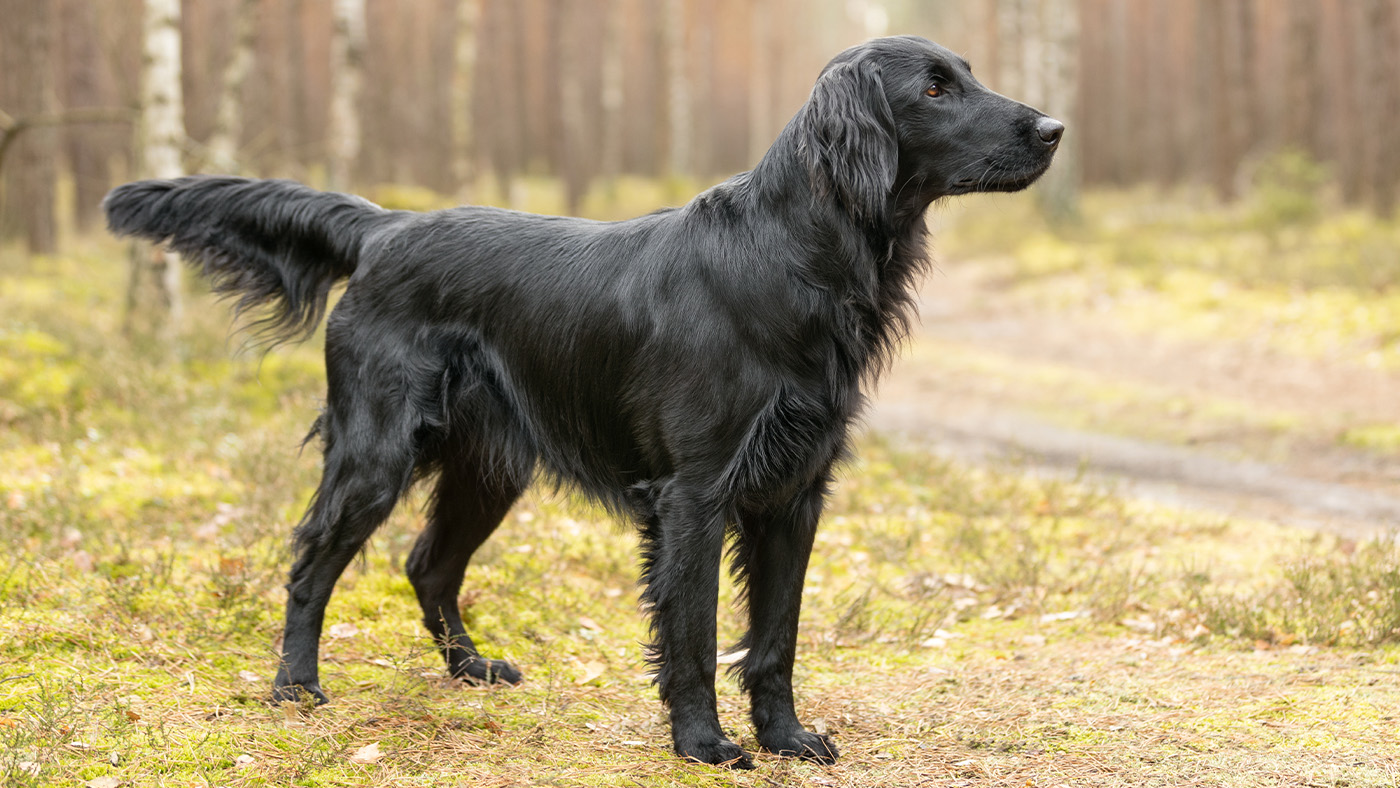
With an unrivaled love of play, a flat-coated retriever is the perfect match for a fun-loving family who love the great outdoors. The American Kennel Club calls them the “Peter Pan of the Sporting Group” and many owners agree, saying they're the breed that never grows up! But all that enthusiasm and zest for life is part of their charm.
Bred in England in the 1800s, the flat-coated retriever became known as the gamekeeper's dog. Its ancestors include a crossbred from a Newfoundland, sheepdog and spaniel-like water dogs.
A popular breed, their numbers declined in the two world wars, with some concerns around whether the breed could last. Thankfully their popularity increased again in the 1960s and the fabulous flatty continues to flourish.
Like the name suggests, the coat is flat and comes in jet black or liver, with elegant feathering at the tail and legs. The lustrous coat protects them from inclement weather and arduous terrain.
As with all retrievers, this biddable British breed is highly trainable and while they were once experienced lake hunters used to retrieve downed waterfowl, today they make for excellent family dogs.
4. Golden retriever

Hailing from the Scottish Highlands in the 1800s, the Scottish breed is credited to Lord Tweedmouth who wanted a dog bred for the punishing Scottish climate capable of retrieving shot waterfowl like ducks and grouse, along with other game birds.
He started with a single yellow puppy from a litter of black wavy-coated retrievers born in England in 1864 and from there he bred the now-extinct Tweed Water Spaniel. Eventually, this became the origin of the golden retrievers that we know and love today.
And what is not to love? These dogs are beautiful, highly intelligent, athletic and loving to boot.
There are actually three separate variations of golden retrievers – British, American, and Canadian. They all feature the shame golden-yellow shaggy coat that requires regular grooming. Speaking of their water-repellent coat, it sheds. Big time! So don't get a golden unless you've got an industrial hoover, too.
5. Labrador Retriever
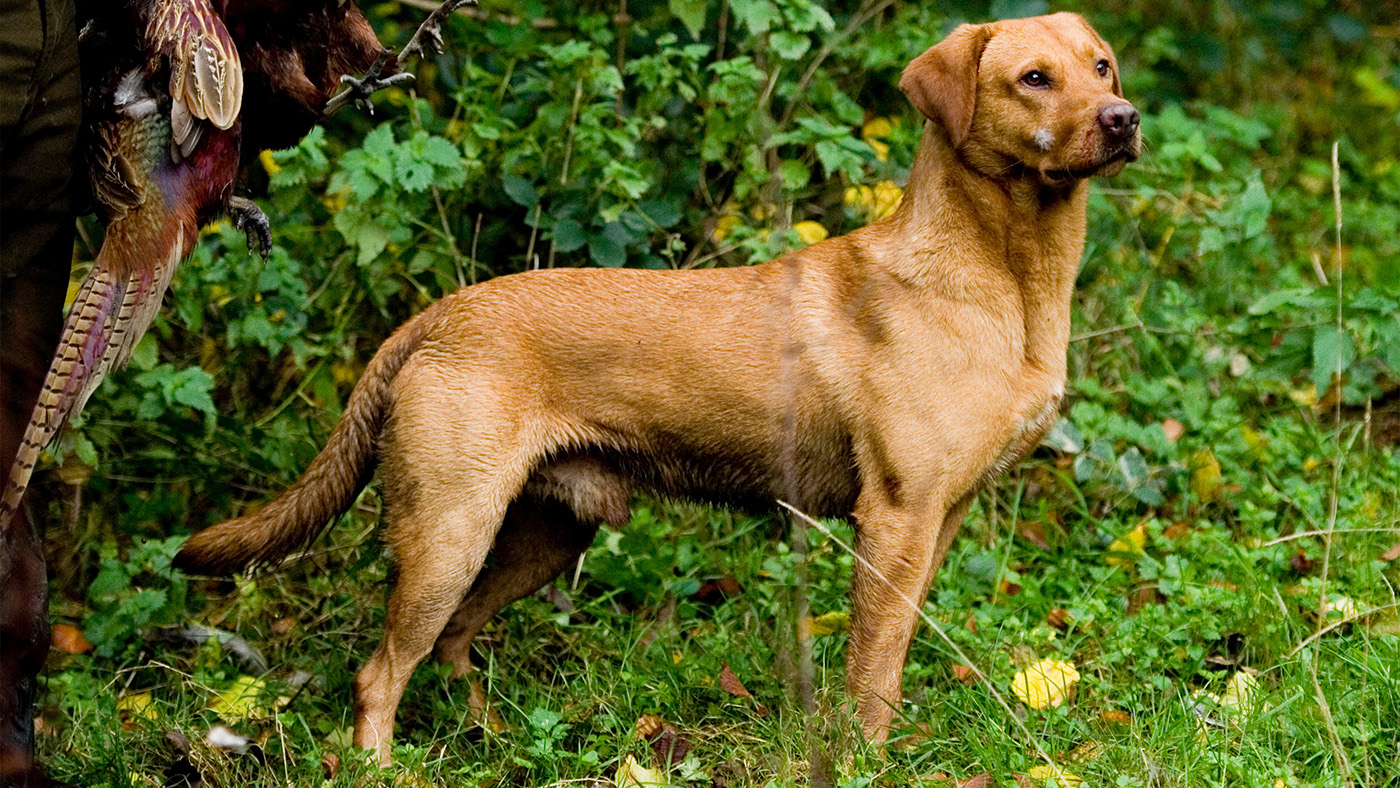
Sweet and lovable, it'd have to be a stone cold heart that couldn't warm to the Labrador Retriever. These gregarious dogs have a joyful attitude to life that's contagious.
The breed originated in northeast Canada where they worked with fishermen to haul in their catches of the day, hence their love of the water. Some of the breed were sent over to England and in the 1800s they became popular sporting dogs popular with the aristocracy.
Colours include black, yellow and chocolate. The coat has short, dense fur and a strong tail. They are highly biddable and often very food motivated. Make sure yours gets plenty of outside exercise as an under-exercised and overfed Labrador is not a good idea!
6. Nova Scotia Duck Tolling Retriever
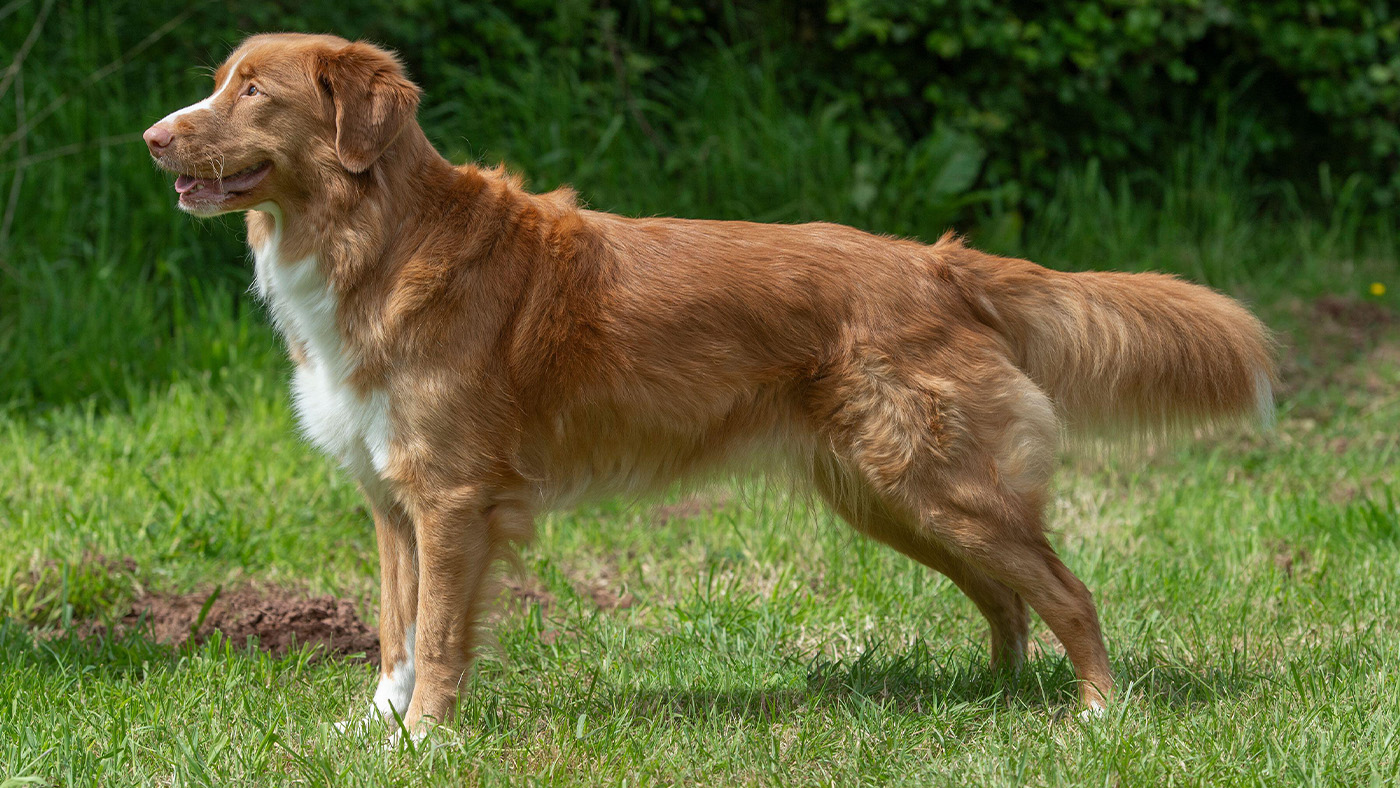
The smallest type of retriever, the Nova Scotia Duck Tolling Retriever is smart, loving and keen to please. They were first developed, as the name suggests, in Nova Scotia around the start of the 19th century.
They are known for their unique way of hunting down waterfowl, called tolling. Essentially, their playful behaviour with a stick or ball attracts the attention of waterfowl prey who were lured to the shoreline. Hunters first noticed the behaviour in wild foxes, then trained their dogs to copy. And so the tolling hunting method was born.
The Toller’s coat is a gorgeous shade, ranging from golden red to dark copper, with white markings. While they look elegant, these dogs are strong and tough, capable of endless energy. They're made for an outdoorsy lifestyle of hunting, walking and swimming, the latter of which suits their webbed feet.
Like golden retrievers, this breed sheds in a big way twice a year and need frequent brushing to keep their coat under control.
Tom Dokken's Retriever Training | Amazon
The Complete Guide to Developing Your Hunting Dog will help you channel your hunting dog's huge ambition so he works for you, the way you want, and does so happily.
Read next: 32 reasons gundogs are so popular

Abby is a freelance writer and dog owner. She currently has two golden retrievers, Lowen and and Indy, but has previously had many other pets, including rabbits.
Abby has written for Metro, House Beautiful, Fit+Well, and more. Alongside this, Abby also volunteers at a local dog rescue centre, helping out with daily activities, such as walking, feeding and grooming.
